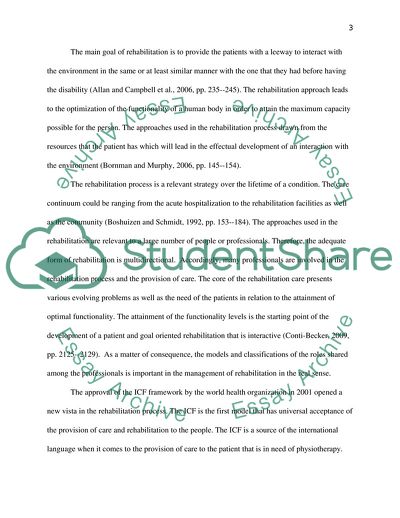Cite this document
(Using the ICF to Facilitate Clinical Reasoning in Physiotherapy Literature review Example | Topics and Well Written Essays - 2500 words, n.d.)
Using the ICF to Facilitate Clinical Reasoning in Physiotherapy Literature review Example | Topics and Well Written Essays - 2500 words. https://studentshare.org/health-sciences-medicine/1813448-using-the-icf-to-facilitate-clinical-reasoning-in-physiotherapy-practice-a-systematic-review
Using the ICF to Facilitate Clinical Reasoning in Physiotherapy Literature review Example | Topics and Well Written Essays - 2500 words. https://studentshare.org/health-sciences-medicine/1813448-using-the-icf-to-facilitate-clinical-reasoning-in-physiotherapy-practice-a-systematic-review
(Using the ICF to Facilitate Clinical Reasoning in Physiotherapy Literature Review Example | Topics and Well Written Essays - 2500 Words)
Using the ICF to Facilitate Clinical Reasoning in Physiotherapy Literature Review Example | Topics and Well Written Essays - 2500 Words. https://studentshare.org/health-sciences-medicine/1813448-using-the-icf-to-facilitate-clinical-reasoning-in-physiotherapy-practice-a-systematic-review.
Using the ICF to Facilitate Clinical Reasoning in Physiotherapy Literature Review Example | Topics and Well Written Essays - 2500 Words. https://studentshare.org/health-sciences-medicine/1813448-using-the-icf-to-facilitate-clinical-reasoning-in-physiotherapy-practice-a-systematic-review.
“Using the ICF to Facilitate Clinical Reasoning in Physiotherapy Literature Review Example | Topics and Well Written Essays - 2500 Words”. https://studentshare.org/health-sciences-medicine/1813448-using-the-icf-to-facilitate-clinical-reasoning-in-physiotherapy-practice-a-systematic-review.


